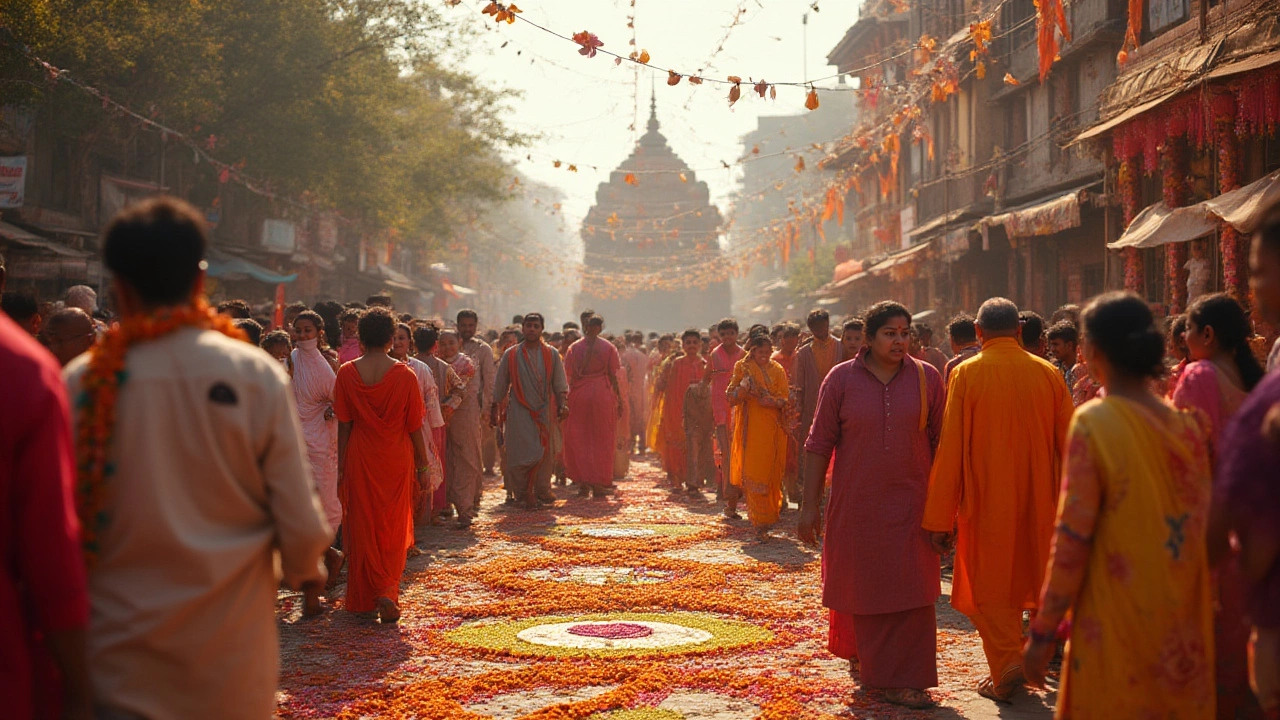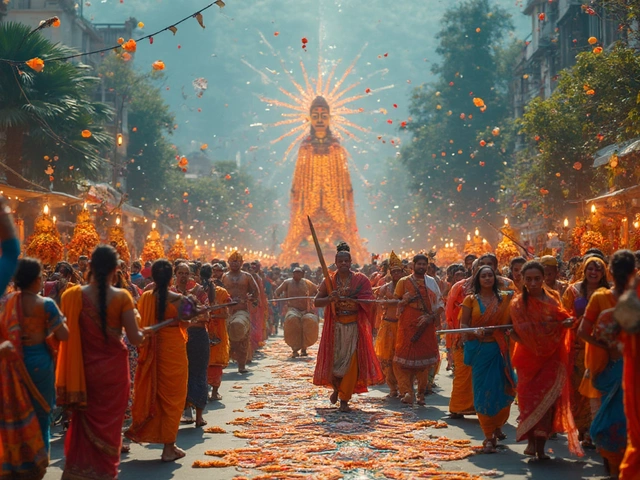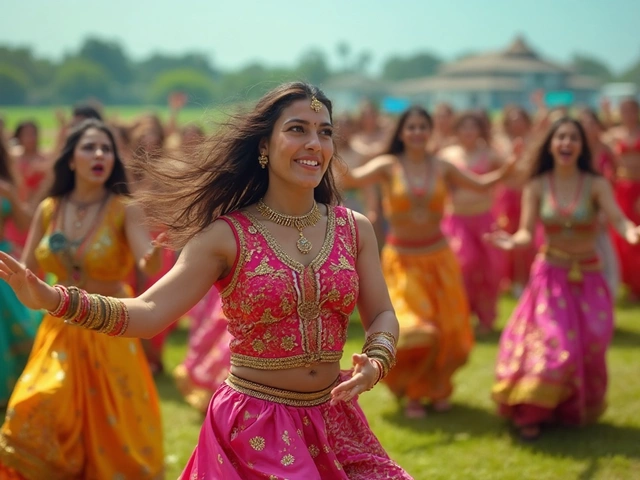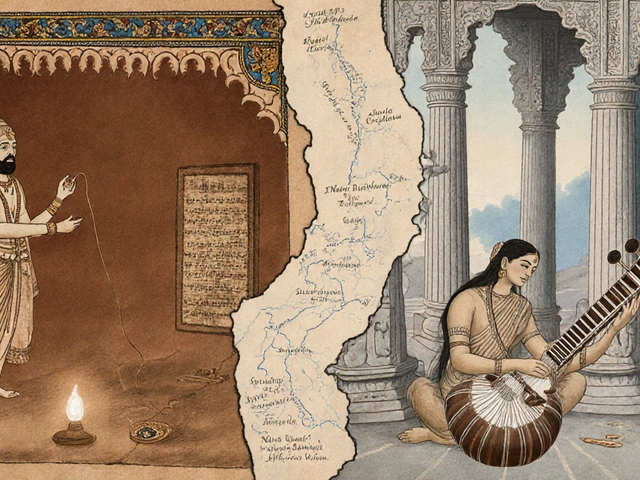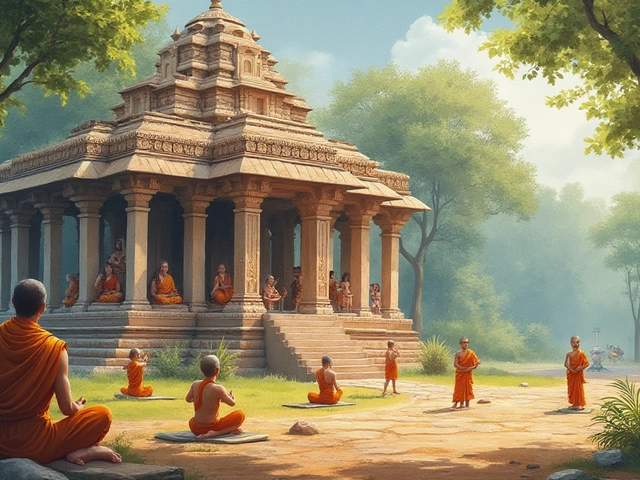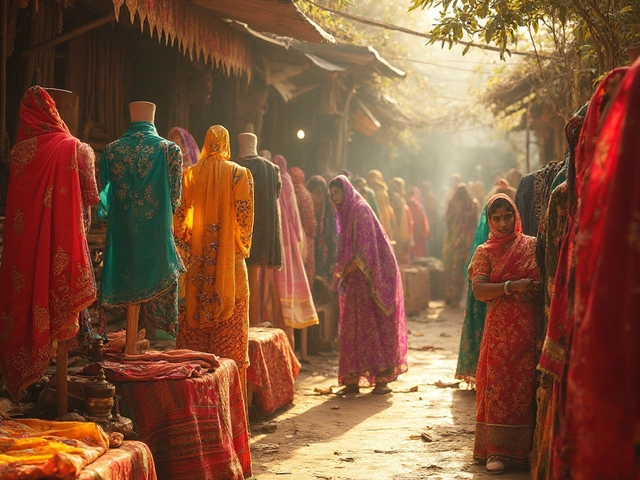Hinduism in Gujarat
When you think of Hinduism in Gujarat, a living, breathing expression of devotion shaped by centuries of regional identity, tribal roots, and community rituals. Also known as Gujarati Hinduism, it’s not just about temples and prayers—it’s in the rhythm of daily life, the colors of Pithora murals, and the smell of jalebi at a temple fair. This isn’t the Hinduism you see in textbooks. It’s the kind practiced in small villages where families still paint walls to honor Rido, the deity of protection, and where every festival has a local twist you won’t find anywhere else.
One of the clearest signs of how deeply faith is woven into culture here is Pithora painting, a sacred folk art created as a ritual offering, not decoration. Also called Pithora murals, these vibrant wall paintings are made by tribal communities across Gujarat to thank the gods for blessings—health, harvests, or safe journeys. They’re not sold in markets. They’re born from prayer. And they’re still being made today, just like they were 500 years ago. Then there’s the food: the fasting rituals of Navratri, a nine-night festival where Gujaratis dance Garba till dawn, offering devotion through movement. Also known as Garba festival, it’s not just a party—it’s a spiritual practice where every step, every clap, is a form of worship. Even the street food—famous for its vegetarian richness—follows religious rules. No onion, no garlic during certain months. No meat, ever, in many homes. These aren’t dietary choices. They’re acts of faith.
Hinduism in Gujarat doesn’t live only in temples. It lives in the way people greet each other with Namaste, in the silence before meals, in the way elders still light diyas at sunrise. It’s in the songs sung during weddings, in the way children learn mantras before they learn the alphabet. You won’t find a rigid hierarchy here. Instead, you’ll find a thousand small traditions, each passed down quietly from mother to daughter, from uncle to nephew. Some are ancient, like the use of cow dung in ritual cleaning. Others are modern adaptations—like online puja bookings during lockdowns. But the heart? That hasn’t changed. What you’ll find in the articles below are real stories: the artists keeping Pithora alive, the families who still make their own ritual offerings, the festivals that turn entire towns into dancing prayer circles. This isn’t history. It’s happening right now, in homes, fields, and alleyways across Gujarat.
